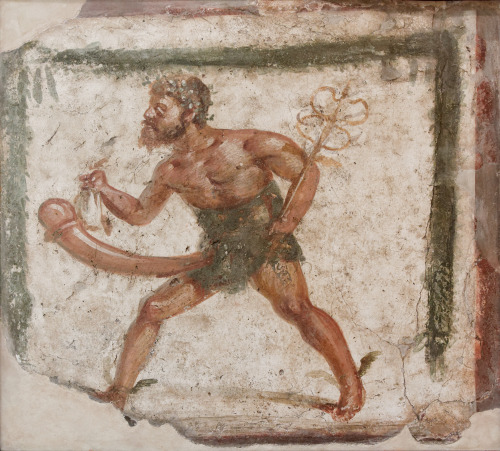#ithyphallic
Today’s piece of erotic art history is a fresco from Pompeii dated between 50-79 CE. This character is frequently mis-identified as Priapus, a god commonly depicted with an giant undying raging erection, but this is actually the messenger god, Mercury (previously known as Hermes to the Greeks) as is denoted by several key identifying attributes in this picture including the wings on his feet, his purse, and his caduceus (1) (a signifying staff with two entwining snakes and a pair of wings at the top typically carried in Mercury / Hermes’ left hand (2)).
Though Priapus is well known for his phallic representations, Mercury / Hermes had a strong phallic association, as well, as is depicted in statues known as herma*. (3) Mercury / Hermes was the god of boundaries and herma were tall statues with flat rectanglular bases with a bust of Hermes at the top and male genitals carves into the otherwise featureless base at the appropriate height which marked borders in lieu of fences. In this scene, wearing only a loin cloth, Mercury walks at an ambitious pace with wings on his feet, his caduceus in his left hand, his pouch in his right hand, and is preceded by his large and improbably shaped erection which is both longer and larger than his arms.
* NOTE - There will be examples of herma uploaded into the database in the future (and may already be present if you are reading this article past its time of publication) which can be found using the #herma hashtag, found below.
REFERENCE / FURTHER READING
(1) WIKIPEDIA ARTICLE: “Hermes”
https://en.wikipedia.org/wiki/Hermes
(2) WIKIPEDIA ARTICLE: “Caduceus”
https://en.wikipedia.org/wiki/Caduceus
(3) WIKIPEDIA ARTICLE: “Herma”
https://en.wikipedia.org/wiki/Herma
WIKIPEDIA ARTICLE: “Pompeii”
https://en.wikipedia.org/wiki/Pompeii
Post link

